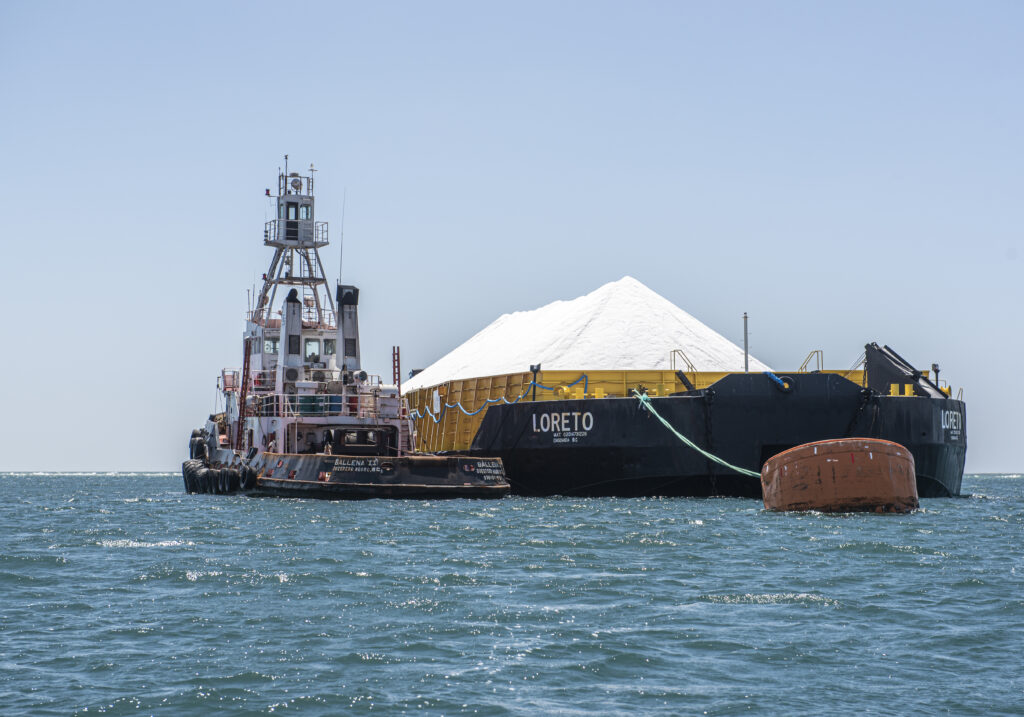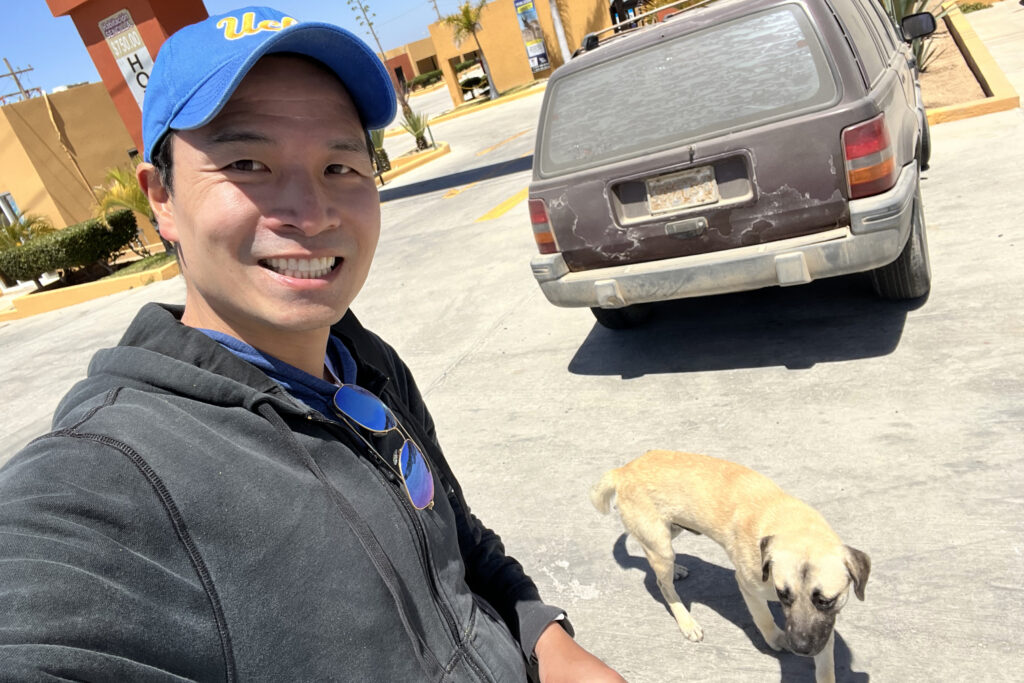April 20, 2023
Baja Bound (Part 16)
By Simon J. Lau

Today, I saw gray whales at Laguna Ojo de Liebre near Guerrero Negro. 🐳 Every year, these whales make one of the longest migrations of any mammal, traveling more than 10,000 miles round trip. They spend their summers feeding in the cold, nutrient-rich waters of Alaska before heading south in the fall, hugging the coastline all the way to Baja California.

By winter, pregnant females arrive to give birth and nurse their calves in the calm, protected lagoons, while other whales come to mate before beginning the long journey north again in the spring. Visiting this late in the season meant there weren’t many tourists around. On my boat, it was just me and one other guest, and out on the water, we saw only one other boat the entire time. This made the experience feel more personal as I observed these whales during this stage of their epic migration.

We also came across a group of sea lions lounging on a large, rusted buoy. 🦭 They barely moved as our boat drifted by, the whole scene framed by deep blue water and the bright white salt flats in the distance. The colors really stood out. The orange of the buoy, the blue of the sea, and the stark white of the salt flats. It felt like something pulled straight from a postcard.

Near the lagoon, we passed a lone osprey perched on a sign, keeping watch over the salt flats. There are many ospreys in this region, and they often build their enormous nests high up on power poles and lines. The problem is that the birds can get dangerously close to the electrical wires, so in recent years, conservation groups and utility companies have started installing special extensions on the poles. These platforms give the ospreys a safe, elevated place to build their nests while keeping them away from the live wires. It was interesting to see how the local infrastructure has slowly adapted to coexist with the wildlife here.

As I drove past those salt flats, I saw they were more than just a striking backdrop, they’re the reason Guerrero Negro exists at all. Unlike most towns in Baja founded by missionaries, this one began as a company town. Established in the 1950s to support the massive saltworks operation, it grew up around the salt flats and processing facilities rather than a mission or colonial plaza.
Today, it’s home to the largest salt-producing operation in the world, Exportadora de Sal, which harvests millions of tons of salt each year from the surrounding flats. The scale is staggering: endless white expanses stretching to the horizon, shaped by wind, sun, and seawater into an industrial landscape unlike anything else in Baja.

Finally, when I returned to my hotel, I found Renegade waiting for me. What a sweet guy.




Comments are closed.